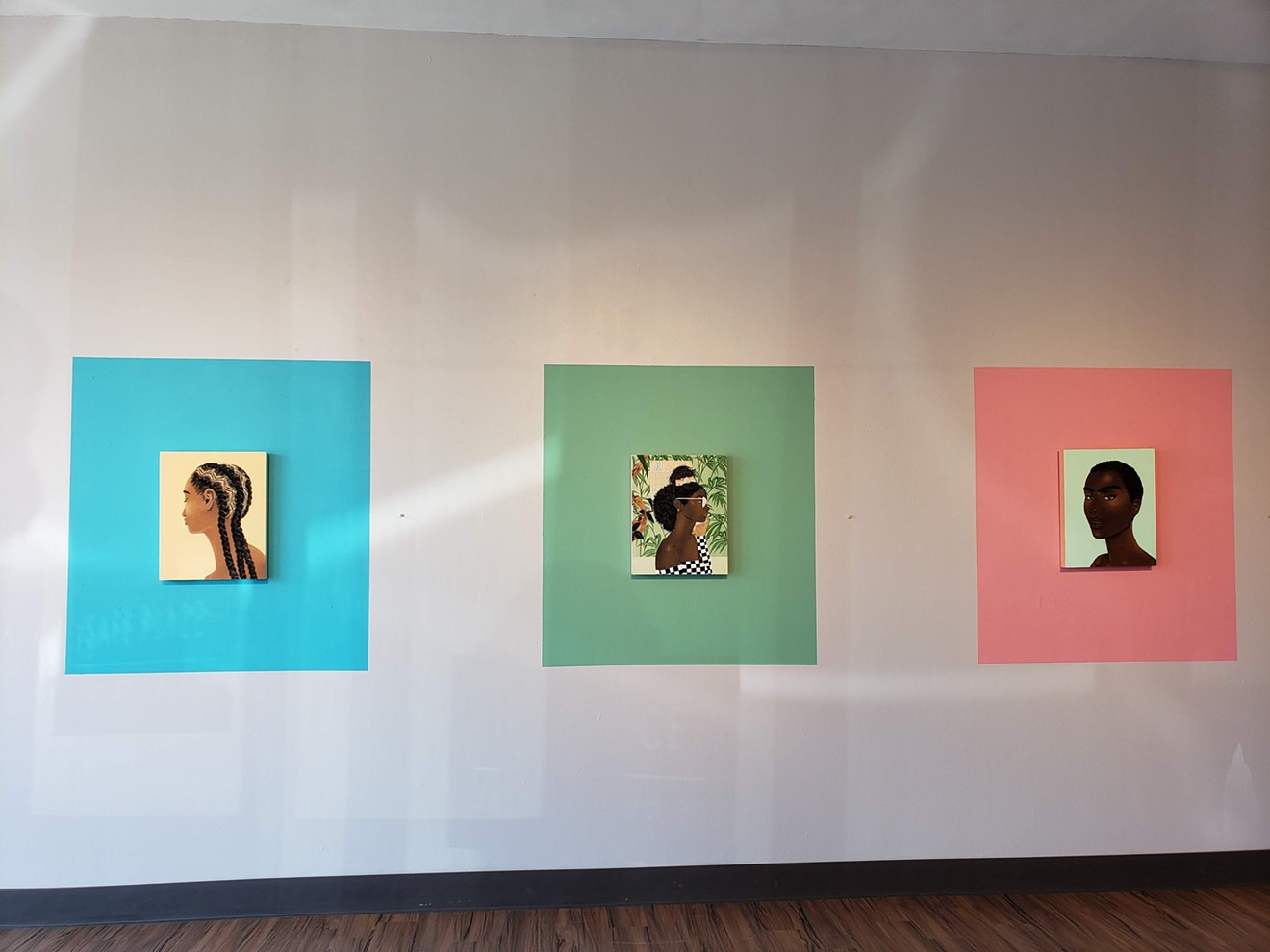Brielle had been making artwork her whole life but started to take it seriously in college after her father mentioned University of North Texas’ art program.
The emerging artist is currently showing with an exhibition called Safe Place, which runs until Aug. 30, at the Oak Cliff Cultural Center. With her collection, Brielle explores the politicization of the black feminine body and ideas of identity, self-care and safety, as well as the connection with the natural world.
Brielle’s visual vocabulary expresses what it means to be a black woman and examines who is presently socially safe and who is at risk, depending on the way they look.
“The black body is politicized from skin tone to hair, what is acceptable and what isn’t,” says Brielle. The artist's gentle manner belies her intense convictions.
Pieces like "In this Skin" celebrate skin tone and what it means in this country. She points to the fact that while non-black people make their skin darker through tanning, at the same time, black and dark-skinned people are mistreated because of their natural skin tone. The pieces also refer to, Brielle says, “the long history of racism and colonialism within our own communities.”

Artist Ari Brielle examines how black women's bodies, including their hair, are viewed.
Ana Astri-O'Reilly
Hair is a fundamental part of black people’s identity and culture, and Brielle deals with the cultural appropriation of black hairstyles in her artwork. One piece, titled "Cash Crop," refers to hair appropriation and references Amandla Stenberg’s video Don’t Cash Crop on my Cornrows.
"(African American) hair is appropriated by non-black people but at the same time it’s stigmatized," Brielle says. "and we’re repressed for it.”
Brielle references big fashion brands and celebrities who incorporate cornrows or do-rags into their branding, while black students at school are called unkempt and teachers cut off their natural hair.
Another painting that deals with hair is "Unlearning." Traditionally, black women have styled their baby hair — the fine hairs located around the edges of the face — in creative ways. Brielle says that this practice is now also common in a primarily non-black fashion world.
“That's another thing that has been appropriated by white girls on the runways,” Brielle says of the hair-do.
She worked the word “unlearn” in the design of the portrait’s baby hair, what's commonly referred to as "edges."
Brielle says there's a necessary change in attitude that is required for women to free themselves from a way of thinking that has been imposed from the outside.“They contribute so much to this country. But they're constantly demonized and stigmatized.” — Ari Brielle
tweet this
“We need to undo in our brain ... of what we’ve been conditioned to think,” Brielle says, adding that what's deemed right, wrong, beautiful or valuable shouldn't be determined by an outside auctioneer. Instead, women — black women especially — determine their own worth.
The recent string murders of trans women in the Dallas area weigh heavily on Brielle’s mind. The theme of safety is woven throughout her work. One installation dominating the room's space is a map of Dallas, marked in the places where the murders occurred. Brielle wants to bring visibility to the plight of the trans community. The map ties to the pieces called "Homegoing (Am I Next?)" and "Say Their Names," which pay homage to the trans women who were killed.
Brielle says she wants the viewer “to think what it must feel like to wonder if that’s gonna happen to you if you walk outside.” The trans flag, the victims’ names, the honeycomb-shaped frames included in the portraits all reference this theme.
Many of Brielle’s pieces contain images of bees and honeycombs. A recent podcast about bees inspired Brielle to think about the similarities between the pollinating insects and the black community: Both were forcefully brought to the United States from other lands like Africa. Both have worked very hard for this country, and just as environmental issues are slowly killing off bees, black women in particular, also aren't allowed to thrive.
“They contribute so much to this country," Brielle says of black women. "But they're constantly demonized and stigmatized.”
Allusions to contemporary black culture pepper Brielle’s work, like singer Solange, who is also referenced in Brielle’s work.
“I like to touch on our culture and reference our icons,” she explains. Brielle painted Toni Morrison’s and Angela Davies’ books in a piece called "Mad." A quote by Audrey Lorde on self-care ("Caring for myself is not self-indulgence, it is self-preservation and that is an act of political welfare") is included in the piece "Lorde Says," along with a portrait of singer-songwriter Sade.
The installation consists partly of objects that re-create the experiences of black women like Brielle herself, including the hair products she uses, or the books she reads. The collection is rich in images of strong, defiant, combative black women, women who are trying to create a safer world, just like Brielle is doing with her art exhibition.











